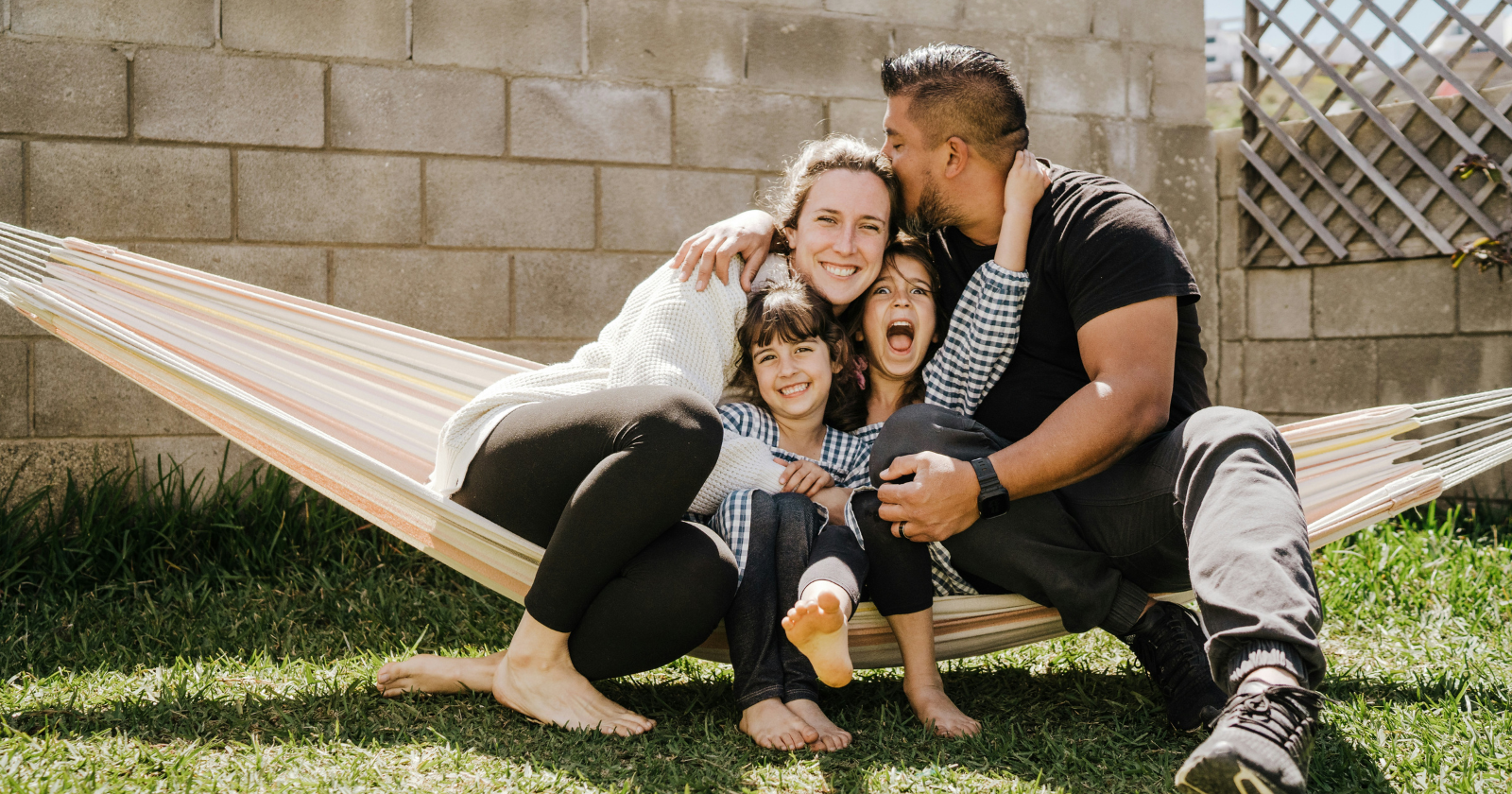As parents, we spend a lot of energy on what we say to our kids: reminders about manners, conversations about kindness, or those life lessons we hope will stick.
But what I’ve noticed—both as a mom and as someone who likes to keep things running smoothly at home—is that our kids are constantly absorbing things we never formally “teach.”
It happens in the in-between moments: while we’re rushing through the morning routine, chatting with our partner at the sink, or handling a late-night email with a sigh.
These are the patterns our kids quietly internalize, and they’re powerful. They’re not the scripted lessons you’ll find in a parenting book, but they shape our children’s sense of the world just as much—sometimes more.
Here are seven lessons even the most intentional parents don’t explicitly teach, but kids pick up anyway.
1. How safe the world feels
Children don’t just learn about safety from rules like “look both ways before crossing the street.” They’re constantly gauging how safe the world feels by watching us.
Do we approach life with an undercurrent of calm, or does everything feel tense and unpredictable?
In psychology, this relates to what’s called a “secure base”—the sense that the world is a manageable place because your caregivers model that stability.
If a parent responds to everyday challenges with steadiness (even if internally they’re juggling a dozen things), kids absorb that steadiness too.
For example, when Emil spilled an entire bowl of cereal across the floor last week, my first instinct was to groan. But I took a breath, grabbed a cloth, and calmly said, “We’ll clean it up.” He looked at me, almost testing, and then helped with the paper towels.
That little moment communicated more than any lecture on safety or resilience could have: messes happen, but the world doesn’t collapse because of them.
2. What love really looks like
Parents can tell their kids “I love you” every day, but children are studying the texture of love through what they witness, not just what they hear.
They notice if affection is expressed in hugs at the end of a long workday, in quiet teamwork while making dinner, or in whether parents truly listen to each other.
Attachment research shows that kids form their blueprint for intimacy by observing how love plays out in real life. It’s less about the words and more about the micro-interactions.
I think of Greta sometimes watching Lukas and me talk in the kitchen. We’ll pause mid-task, share a small laugh, or even disagree respectfully. She doesn’t need a definition of love—she’s watching what it looks like.
Later, when she sets up her “shop” with signs and play money, I notice her assigning roles: a parent buying thoughtfully, another parent waiting patiently. It’s a mirror of what she sees.
3. How to cope with imperfection
No parent sits their child down and says, “Here’s how to handle mistakes.” But kids are always watching our relationship with imperfection.
- The art of aging well: 9 things people in their 70s should never apologize for doing - Global English Editing
- Psychology says people with no close friends often display these 9 quiet habits (without even realizing it) - Global English Editing
- If you still write birthday cards by hand instead of texting, psychology says you display these 9 increasingly rare qualities - Global English Editing
Do we beat ourselves up when dinner burns, or do we shrug and suggest scrambled eggs instead?
As parents, we need to be mindful of how we cope with our own stresses. Kids see whether mistakes are treated as crises or as opportunities to adapt. Over time, they internalize the same strategies for their own slip-ups.
Developmental psychologists often emphasize that children build what’s called “self-efficacy”—the belief in their own ability to handle challenges—through these observations. They don’t need a speech about resilience; they need to see it modeled in real time.
So the next time something goes sideways, think of it as more than an inconvenience. It’s a silent lesson in progress: showing your child that imperfection is not a threat, but a normal, workable part of life.
4. The pace of life
Every household has its own rhythm, and kids learn it not through explanation but through experience. They notice whether mornings feel like a daily sprint, whether weekends are packed or paced, whether family meals are rushed or lingered over.
Kids develop a sense of “normal” from these rhythms, and that sense becomes their default as adults. They carry forward not just memories, but the tempo of their upbringing.
In our home, I’m mindful of this. Lukas’s corporate schedule means weekday evenings can be tight, but we’ve made Saturday mornings deliberately slow.
He makes pancakes, the kids wander between coloring and play, and no one’s rushing out the door. Greta and Emil may not realize it now, but they’re absorbing a lesson: life doesn’t always have to move fast.
5. The value of silence
Silence is one of those things parents rarely talk about with kids, but children sense whether it’s peaceful, awkward, or uncomfortable in a home.
Psychologists describe this as “emotional climate.” Silence can either feel safe—a pause to rest and think—or it can feel tense, like something bad is about to happen. Kids pick up on it instantly.
In our house, I use silence as part of rhythm. During stroller walks, I’ll sometimes switch off my podcast and just let Emil ride quietly, pointing out dogs or trucks when he feels like it.
That kind of silence communicates safety and presence, without needing to fill every gap with chatter.
6. What resilience looks like
Resilience isn’t something you can explain on a whiteboard. Children learn it by watching how adults handle disappointment, illness, or stress.
Maybe a parent loses a job, faces a health scare, or even just deals with a bad day—and the child, watching quietly from the corner, learns what bouncing back looks like.
When Lukas had a project fall through last year, I noticed Greta sitting nearby as he calmly explained over dinner that it hadn’t worked out, but he was already planning his next steps.
He didn’t realize it, but he was teaching resilience. No lecture needed—just the visible act of moving forward with steadiness.
7. Whether joy is allowed
Children quickly absorb whether joy is something that has a place in adult life—or if it’s reserved only for kids.
Parents don’t have to say, “Play is important” or “Fun matters.” They just show it by whether they laugh, dance in the kitchen, or take delight in small things.
Joy is often considered a form of emotional modeling. Kids who see their parents allow joy amidst busyness learn that happiness doesn’t need permission—it can coexist with responsibility.
One of my favorite moments each week is when Lukas does bedtime stories. He always adds silly voices, and Emil belly-laughs until he falls over. Greta rolls her eyes but can’t hide her smile.
In those moments, our kids are learning that adulthood isn’t just serious business—it can hold play and lightness, too.
Final thoughts
The lessons our kids pick up indirectly are often the ones that last the longest.
They’re not delivered in lectures or outlined in chore charts. They live in the way we handle stress, the rhythm of our mornings, the way we love each other, and the atmosphere we create at home.
Even the best parents can’t (and don’t need to) spell out every life skill. What matters is that we’re mindful of what our kids are quietly absorbing.
Because in the long run, it’s these unspoken lessons that shape how they see themselves, their relationships, and the world around them.



